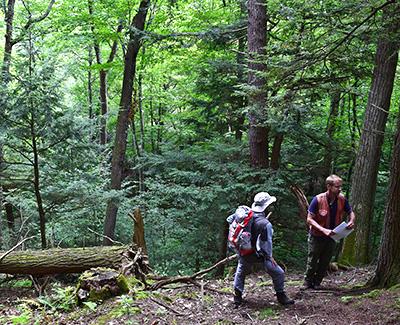The Vermont Forest Ecosystem Management Demonstration Project: Evaluation of Carbon and Methane Responses One Decade Post-Treatment

In 2001, NSRC researchers established the Vermont Forest Ecosystem Management Demonstration Project on two sites in northern Vermont to test natural disturbance-based silvicultural approaches, including one called Structural Complexity Enhancement (SCE). Disturbance-based silviculture attempts to mimic structural and compositional forest conditions associated with natural disturbances, such as blowdowns, and helps to manage for late successional or old growth structure (stand structural complexity). These approaches have recently gained attention because of their potential for maintaining high levels of forest biomass and carbon storage, which is increasingly incentivized by compliance and voluntary carbon markets.
In 2003, NSRC researchers implemented three different timber harvest treatments: SCE, single-tree selection, and group selection. A decade later, SCE treatments in these northern hardwood-conifer forests resulted in carbon storage only slightly less than simulated no-harvest baselines and substantially greater than in conventional selection harvests. Total aboveground carbon storage in SCE plots was 15.90% less than that projected for no-treatment, compared to 44.94% less in conventionally treated areas. Methane emissions from the heartwood of older trees of some species could reduce the average climate mitigation value of temperate forests by 10-30%, though there is still high scientific uncertainty around this question.
SEC treatments are an effective approach for increasing carbon storage in managed northern hardwoods. They offer an alternative sustainable management, integrating carbon, associated climate change mitigation benefits, late-successional forest structure and habitat, and co-benefits including low-intensity timber harvest. Northern Forest landowners can participate in carbon markets by using these sustainable forest management techniques. Working forests can accrue additional revenue, encouraging sustainable forest management and open space conservation.
